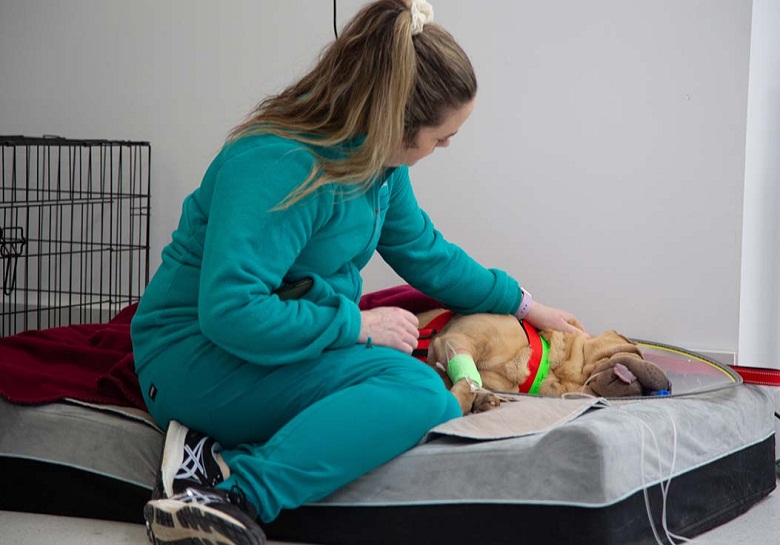Cat or kitten desexing offers a number of benefits, including reduced roaming, fighting, and aggression. It significantly reduces the risk of uterine infection and mammary cancer in females, and prostate gland cancer in males. On a wider scale, desexing also limits the occurrence of unwanted litters, strays, and overpopulation of our feline friends.

Most pet owners are under no illusions that kitten or cat desexing is in their pet’s best interests, but many are unsure of what sort of aftercare is required. This is, after all, a major medical procedure and ensuring your feline’s comfort during recovery is a must.
- Monitor the wound
When desexing female cats, the wound should be inspected daily for 10 to 14 days. If they didn’t receive dissolvable stitches, they will need to be removed by a vet at their check-up. When desexing male cats, no stitches are required but there will be two small incisions below their bottom. If you notice sudden swelling, pus and discharge, significant pain, or your cat is not eating, it’s important that you contact your vet, as an infection may have developed.
As cats are compulsive cleaners, they may lick or bite at the area excessively. To avoid irritation and allow the wound to heal, a head or ‘Elizabethan’ collar may be fitted; your cat will need to wear this until the stitches are removed or the wound has healed.
- Rest and recovery
Most animals will be groggy for a few hours following the surgery, particularly after desexing female cats, which can even persist into the next day. Provide them with a quiet and stable environment so that they can get some much-needed rest. A cosy blanket is a good idea, as animals are less able to regulate their own body temperatures after a procedure like this one. Ensure that they have access to food and water.
It’s likely that your cat will be sent home with some pain relief (such as a tablet, syrup, or even a topical cream). It’s important that you follow the instructions for administering the medication to ensure that their pain is managed.
- Feeding and nutrition
While your cat can eat their dinner as usual the night before the procedure, they must not eat or drink anything after that. After being desexed, your pet is free to eat and drink as normal. However, some pets feel nauseous from the procedure and anaesthetic, so don’t be surprised if they don’t immediately start to chow down on the food you offer. Start by offering them a small amount of food and water and encourage them to eat.
If they seem to be eating well and there's no vomiting, you can give them some more food and water a few hours later. If there is frequent vomiting or your pet refuses to eat overnight, contact your vet for advice.
- Return to activity
You will need to control and limit activity for five to 14 days while recovering from a kitten or cat desexing procedure. This will prevent them from tearing the stitches and otherwise slowing down their recovery. Keep them indoors and avoid strenuous activity (including climbing stairs, jumping up and down from couches or beds, and rough play). You may need to confine them to a room to achieve this.
After desexing male cats, they must also be kept away from any females on heat for at least a week after the procedure, as viable sperm may still be present in the lower passages. After a week, they will not be able to sire any kittens.
Although kitten and cat desexing is considered a major surgery, in most cases, they will be able to return home with you the same day. They will be much happier in a familiar environment with you to love and care for them while they recuperate. If you have any concerns or questions at all during the recovery stage, do not hesitate to contact your vet – they'll be more than happy to help.
